
Are you feeling the itch to escape the concrete jungle and venture into the great outdoors? Do you yearn for fresh air, starry nights, and the sweet aroma of burning marshmallows? Well, my friend, it sounds like you’re ready to embark on a camping adventure and learn how to set up a campsite!
But hold your s’mores-loving horses for a moment. If you’re new to the camping scene, fear not! This article is here to help you navigate the wild and wonderful world of campsites with a touch of humor and a lot of practical advice. We’ll take you from clueless to campfire connoisseur in no time. So buckle up your hiking boots and prepare for a dose of hilariously helpful information!
Now, you might be wondering, “Why should I trust this self-proclaimed camping guru?” Well, I may not have climbed Mount Everest or wrestled a grizzly bear (although I did once battle a stubborn tent zipper), but I’ve had my fair share of camping misadventures and triumphant tent-pitching moments. I’ve learned from my mistakes, so you don’t have to repeat them!
In this guide, we’ll cover everything you need to know to set up a campsite like a pro. From choosing the perfect spot to packing the essential gear, we’ve got you covered. We’ll even delve into the art of outdoor bathrooms and surviving encounters with wild creatures (no, not your in-laws).
Now, sit back, relax, and get ready to embark on a camping journey that will leave you with memories, mosquito bites, and a newfound appreciation for indoor plumbing. Let’s dive into the wild world of campsites together, armed with laughter, practical tips, and a healthy dose of bug repellent!
So, without further ado, let’s pitch our tents and roast some wisdom over the campfire of knowledge. Join me as we explore the wonderful and occasionally wacky world of camping. Trust me, by the time you finish reading this guide, you’ll be itching to swap your city-slicker shoes for some sturdy hiking boots and answer nature’s call—literally and figuratively.
Choosing the Perfect Campsite
Ah, the quest for the perfect campsite. It’s like searching for the holy grail of outdoor adventures. But fear not, fellow camping novices! I’m here to guide you through the enchanted forest of campground options and help you find the ideal spot to pitch your tent.
A. Researching campgrounds and their amenities
Before you embark on your camping odyssey, it’s crucial to do a little reconnaissance. Get cozy with your best friend, Mr. Google, and start searching for campgrounds in your desired area. Look for websites, reviews, and recommendations from fellow campers. Trust me, they’re a chatty bunch when it comes to sharing their experiences!
Pay attention to the amenities offered by each campground. Are you looking for a luxurious glamping experience with hot showers and Wi-Fi, or are you ready to rough it in the wilderness with nothing but a bucket for bathing? Keep your preferences in mind as you browse through the options.
B. Considering factors like proximity, facilities, and activities
Now that you’ve compiled a list of potential campgrounds, it’s time to narrow it down further. Consider the following factors:
- Proximity: How far are you willing to travel? Are you looking for a quick weekend getaway or a longer adventure? Remember, the longer the journey, the more snacks you’ll need to pack.
- Facilities: Take a peek at what each campground offers in terms of restrooms, showers, and water sources. If you’re a fan of a hot shower after a day of hiking, make sure your chosen site provides this luxury.
- Activities: What tickles your camping fancy? Are you a hiking enthusiast or a fishing fanatic? Check if the campgrounds you’re eyeing have trails, fishing spots, or any other activities that align with your outdoor interests.
C. Importance of booking in advance (avoiding disaster stories)
Let me share a cautionary tale: Picture this—a beautiful sunny day, birds chirping, and you’re ready for a weekend of camping bliss. But wait, all the campsites are fully booked! Your dreams of roasted marshmallows and stargazing turn into a bitter disappointment. Trust me, you don’t want to learn this lesson the hard way.
Booking your campsite in advance is like ensuring your place in camping paradise. Popular campgrounds tend to fill up quickly, especially during peak seasons. So, as soon as you decide on a destination and have your dates locked in, jump online and make that reservation. You’ll thank me later when you’re sipping hot cocoa by the campfire, while others are wandering the woods in search of a vacant spot.
D. Pro tips: avoiding noisy neighbors or bug-infested areas
Now, let’s dive into some pro tips to help you avoid any potential camping pitfalls. We all know that one noisy camper who insists on blasting music all night or the mosquito-ridden swamp that looks like it’s straight out of a horror movie. Here’s how to steer clear of those less-than-ideal situations:
- Noise control: Look for campgrounds that have designated quiet hours. This will ensure a peaceful night’s sleep, free from the sounds of late-night campfire karaoke or campers who think they’re auditioning for a chainsaw symphony.
- Insect-free zones: Research campgrounds known for their bug-free bliss. Check if they have measures in place to keep the pesky critters at bay. After all, you don’t want your camping experience turning into a mosquito buffet.
With these tips in your camping toolkit, you’re well-equipped to choose the perfect campsite. So, get your compass ready, pack your sense of adventure, and prepare for a camping experience that will make you feel like a seasoned wilderness explorer.
Essential Camping Gear
Congratulations! You’ve chosen the perfect campsite and now it’s time to gear up for your camping adventure. Don’t worry if you’re unsure about what you’ll need; I’m here to help you navigate the vast world of camping gear with a touch of humor and a lot of practicality. So, let’s dive into the essential camping gear you’ll need to make your trip a comfortable and memorable one.
A. The Tent: Finding the right size and understanding the jargon
Ah, the humble abode of the camping world—the tent. Choosing the right tent can make or break your camping experience, so pay attention to a few key factors:
- Size matters: Consider how many people will be sleeping in the tent. Tents are typically labeled with the number of occupants they can comfortably accommodate. But remember, those numbers can be optimistic. If you’re a fan of personal space or plan to bring along bulky gear, opt for a slightly larger tent than recommended.
- Easy peasy setup: Look for tents with straightforward setup instructions. Trust me, wrestling with a tent in the dark while swatting away mosquitoes is not the kind of adventure you signed up for.
- Rainfly, footprint, oh my! Familiarize yourself with tent jargon. A rainfly is a waterproof cover that protects your tent from rain, while a footprint is a groundsheet that provides an extra layer of protection against moisture and wear. Both are highly recommended for a comfortable camping experience.
B. Sleeping bags and pads: Comfort and warmth on a budget
Sleeping under the stars can be a magical experience, but it’s important to stay cozy and comfortable throughout the night. Here’s what you’ll need:
- Snug as a bug: Choose a sleeping bag that suits the expected temperature range of your camping destination. Look for features like insulation, temperature ratings, and shape preferences (mummy or rectangular) to find the perfect cocoon for a restful slumber.
- Don’t forget the pad: Sleeping pads provide cushioning and insulation between you and the cold, hard ground. Opt for an inflatable or foam pad to add an extra layer of comfort. Plus, they double as makeshift sleds for impromptu downhill adventures. Just kidding. Maybe.
C. Camp chairs and tables: Avoiding the “picnic blanket on the ground” scenario
Sure, picnicking on the ground can be charming, but let’s be honest—you’ll appreciate having a comfortable place to sit and enjoy your meals. Here’s what to consider:
- Chairs that don’t leave you aching: Invest in lightweight, collapsible camp chairs that are easy to transport. Your backside will thank you after a long day of hiking.
- A table fit for feasting: Look for portable camping tables that provide a stable surface for food prep, cooking, and enjoying your camping cuisine. It beats balancing your plate on your lap while fighting off sneaky critters eyeing your food.
D. Flashlights, headlamps, and lanterns: Illuminating your way to the bathroom
Navigating the darkness of a campsite at night can be a comical adventure (or a recipe for stubbed toes). Here’s what you need to light up your camp life:
- The trusty flashlight: Get yourself a reliable flashlight with fresh batteries. It’ll be your guiding light in the dark, helping you find your way to the bathroom or locate that marshmallow you dropped on the ground.
- Shine bright like a headlamp: A headlamp is like a flashlight you wear on your forehead. It keeps your hands free while providing focused illumination for tasks like cooking, nighttime reading, or storytelling around the campfire.
- The campsite centerpiece: Lanterns add ambiance to your campsite and provide a soft, all-around glow. Look for battery-powered or solar-powered options to avoid the hassle of fuel and open flames.
With these essential camping gear items in your possession, you’ll be well-prepared for a comfortable and enjoyable outdoor experience.
Meal Planning and Cooking
Welcome to the culinary side of camping! While nature provides a breathtaking backdrop, it’s up to you to satisfy your taste buds amidst the great outdoors. Don’t worry, even if you’re not a master chef, I’ve got some tips and tricks to help you whip up delicious campfire meals and avoid the dreaded burnt hot dogs. So, let’s dig in!
A. Planning meals ahead: From campfire delicacies to the humble PB&J
The key to a successful camping menu is planning ahead. Consider these factors when deciding what to bring:
- Keep it simple: Opt for meals that are easy to prepare and require minimal ingredients. Remember, you’ll be working with limited resources and cooking equipment, so simplicity is key.
- Go for variety: Aim for a mix of meals, including breakfast, lunch, dinner, and snacks. Embrace the classics like hot dogs and s’mores, but also explore new recipes to spice up your camping cuisine.
- Pack smart: Plan meals that use similar ingredients to minimize the number of items you need to carry. For example, if you’re making tacos one night, use the same veggies and spices for a tasty breakfast scramble the next morning.
B. Pack a portable stove: Making hot meals without a culinary meltdown
While campfires are great for roasting marshmallows, they may not be the most reliable cooking method. Invest in a portable camping stove for a convenient and efficient cooking experience:
- Fuel options: Choose a stove that runs on either propane or butane fuel, which are readily available at camping stores. Make sure to pack extra fuel canisters based on the duration of your trip.
- Cooking power: Look for stoves with adjustable burners, allowing you to control the heat for different cooking techniques. This way, you won’t end up with a charred masterpiece or a raw disaster.
- Don’t forget the cookware: Pack lightweight, non-stick pots, pans, and utensils suitable for camping. It’s best to have a dedicated set for your outdoor culinary adventures.
C. Cooking utensils: The essentials for gourmet camping
You don’t need a full kitchen to whip up delicious meals at your campsite. Here are some essential cooking utensils to pack:
- Knife skills: A sharp, multi-purpose camping knife is your best friend for food prep, slicing, and dicing. Just be careful not to confuse it with your toothbrush in the early morning grogginess.
- Handy utensils: Pack a spatula, tongs, and a sturdy cooking spoon to help you maneuver and flip your culinary creations. Eating with your hands is fun, but let’s keep it civilized, shall we?
- Coffee enthusiasts unite: If you’re a caffeine addict like me, don’t forget a portable coffee maker or a French press to kickstart your mornings with a hot cup of Joe. Trust me, it’s the fuel that keeps the camping adventure going.
D. Embrace the s’mores culture: The delicious dessert tradition
No camping trip is complete without indulging in the ooey-gooey goodness of s’mores. Here are some tips to elevate your s’mores game:
- Upgrade your ingredients: Opt for high-quality chocolate bars, gourmet marshmallows, and flavored graham crackers for a tantalizing twist on the classic s’mores.
- Get creative: Don’t limit yourself to the traditional combination of chocolate, marshmallows, and graham crackers. Experiment with different flavors by adding peanut butter, Nutella, caramel, or even sliced fruit. The possibilities are as endless as the starry night sky.
- Toast it to perfection: Patience is key when roasting marshmallows. Aim for that perfect golden-brown exterior and a gooey center. Be warned, though—marshmallows have a tendency to catch fire, so keep an eye on them unless you enjoy the taste of charred sweetness.
With these meal planning and cooking tips in mind, you’re well on your way to becoming a camping chef extraordinaire. Get ready to impress your fellow campers with your culinary creations and fill the air with the enticing aromas of campfire cooking.
Campfire Etiquette and Safety
Ah, the crackling campfire—the heart and soul of any camping trip. But before you gather ’round for stories and roasted marshmallows, it’s important to brush up on campfire etiquette and safety. Let’s ensure your campfire experience is enjoyable, responsible, and free from flaming mishaps.
A. Gathering firewood and building a safe campfire
- Leave no trace: When collecting firewood, opt for fallen branches and sticks instead of breaking live branches off trees. Respect nature and its delicate balance by minimizing your impact on the environment.
- Clear the area: Ensure there’s a safe distance between the campfire and any flammable materials such as dry leaves, overhanging branches, or tents. Clear the ground to create a fire ring or use an existing fire pit if available.
- Follow the pyramid technique: Build your fire using the pyramid method—start with small twigs and gradually add larger sticks and logs as the fire grows. This helps maintain a steady flame and promotes efficient burning.
B. Fire safety: Extinguish it like a pro and avoid creating a forest fire
- Keep a bucket of water or a fire extinguisher nearby: In case of an emergency, you’ll want to have a means to quickly extinguish the flames. A bucket of water or a fire extinguisher can be a lifesaver (and a fire-saver).
- Never leave the fire unattended: It’s tempting to wander off and explore, but ensure someone responsible stays near the fire at all times. You don’t want the wind to reignite the flames and start an unintentional forest fire.
- Completely extinguish the fire before leaving: Before you call it a night or leave the campsite, pour water over the fire, stir the ashes, and repeat until everything is cool to the touch. Only then can you rest easy knowing the fire is truly out.
C. Respect the quiet hours: Anecdotes about loud campfire singers
- Be mindful of others: Respect quiet hours designated by the campground to ensure a peaceful environment for all campers. Late-night campfire sing-alongs are best saved for karaoke nights back in the city.
- Keep the volume in check: Enjoy your conversations and laughter around the campfire, but be considerate of neighboring campers. They might not appreciate hearing your rendition of “Bohemian Rhapsody” at 2 a.m. (unless they’re die-hard fans, of course).
D. Keeping wildlife at bay: Don’t feed the raccoons!
- Store food properly: Keep your food stored in sealed containers or coolers to deter unwanted furry visitors. Leaving food unattended or accessible to wildlife not only disrupts their natural behavior but can also lead to dangerous encounters.
- Dispose of trash responsibly: Don’t forget the golden rule of camping—leave no trace. Pack out your trash, including food scraps, and dispose of them in designated waste receptacles. Keep your campsite clean and critter-free.
By following these campfire etiquette and safety guidelines, you’ll not only ensure your own well-being but also contribute to a positive camping experience for everyone around you. So, gather ’round the fire, share stories, and enjoy the warmth of camaraderie.
The Call of Nature: Dealing with Bathrooms and Showers
When nature calls, even in the great outdoors, you need to be prepared. As much as we appreciate the rustic charm of camping, it’s essential to know how to handle bathroom needs and maintain hygiene during your outdoor adventure. Let’s dive into the world of bathrooms and showers in the wilderness.
A. Campground restroom facilities: Understanding what to expect
- Familiarize yourself with campground facilities: Most campgrounds provide restroom facilities, which may include toilets, sinks, and sometimes even showers. Take some time to locate these facilities upon arrival, so you know where to go when nature calls.
- Prepare for basic amenities: Keep in mind that campground restrooms might not offer the same level of comfort as your bathroom at home. Don’t expect luxurious marble countertops or scented hand towels. However, they serve the purpose well enough.
B. The art of outdoor bathrooms: Digging a hole and doing your business
- Know the rules: Some camping areas may not have restroom facilities, and you’ll need to rely on outdoor bathroom practices. Check local regulations or campground guidelines to learn about specific rules and recommendations for handling human waste.
- Proper waste disposal: If you find yourself without access to restroom facilities, it’s essential to practice Leave No Trace principles. Dig a small hole at least 6-8 inches deep and a good distance away from water sources, trails, and campsites. Afterward, cover the hole and pack out any toilet paper or hygiene products.
- Bring your own supplies: Carry biodegradable toilet paper, moist towelettes, and hand sanitizer to maintain hygiene when using outdoor bathroom facilities. Remember to pack them out as well.
C. Showering in nature: Embrace the cold water for a refreshing wake-up call
- Embrace the wilderness shower: Some campgrounds offer shower facilities, but they may have limited availability or require additional fees. If you’re up for an invigorating experience, you can enjoy a refreshing shower in nature using portable camping showers or bathing in nearby lakes or rivers.
- Embrace the “camping clean” mindset: Accept that camping showers may not be the same as luxurious spa experiences. Embrace the simplicity of washing off dirt and sweat with cold water, and revel in the refreshing feeling of being at one with nature.
- Water-saving techniques: Be mindful of water usage while showering outdoors. Use a water container with a spout or a showerhead attachment that allows you to control the flow. Take shorter showers to conserve water resources.
Remember, camping is all about embracing the simplicity and natural beauty of the great outdoors. By following proper bathroom etiquette and being respectful of the environment, you can ensure a hygienic and environmentally conscious camping experience.
Entertainment and Activities
Congratulations! You’ve mastered the art of campsite hygiene. Now, it’s time to shift our focus to the exciting realm of camping entertainment and activities. From engaging games to awe-inspiring adventures, let’s explore the many ways to make the most of your time in the great outdoors.
A. Fun-filled camping games: From charades to ghost stories
- Classic card games: Pack a deck of cards and enjoy timeless favorites like Go Fish, Crazy Eights, or Poker. They’re perfect for passing the time around the campfire or during a rainy day in the tent.
- Charades: Embrace your inner actor and play a lively game of charades. From mimicking animals to acting out camping-related words, this game guarantees laughter and entertainment.
- Scavenger hunts: Create a scavenger hunt with a list of items or nature-related clues. It’s an engaging way to explore the campground and appreciate the surrounding environment.
- Campfire storytelling: Gather ’round the campfire and share spooky or funny stories. Let your imagination run wild as you create unforgettable tales that will keep everyone on the edge of their camping chairs (just be mindful of quiet hours).
B. Exploring the great outdoors: Hiking, fishing, and more
- Hit the trails: Lace up your hiking boots and embark on a scenic hike. Research the hiking trails in the area and choose one that suits your fitness level and interests. Don’t forget to bring a map, water, and snacks for the journey.
- Fishing adventures: If you enjoy fishing, check if the campground allows it and if any permits are required. Cast your line and try your luck at catching some fresh fish for dinner. Just remember to follow fishing regulations and practice catch-and-release if necessary.
- Nature walks and wildlife spotting: Take leisurely strolls around the campground or nearby trails. Observe the flora and fauna, and keep an eye out for wildlife. Just remember to maintain a safe distance and avoid feeding or approaching wild animals.
C. Star-gazing and night photography: Immersing in the beauty of the night sky
- Embrace the darkness: Away from city lights, camping offers a unique opportunity for stargazing. Lie back, admire the twinkling night sky, and try to spot constellations or shooting stars. Consider using a stargazing app to help you identify celestial objects.
- Nighttime photography: If you’re into photography, capture the magical atmosphere of the night sky. Bring your camera and experiment with long exposures to create stunning shots of star trails or the Milky Way. Just be sure to practice proper night photography etiquette by avoiding using flash or disturbing others with bright lights.
D. Wildlife encounters: Admiring from a distance and avoiding bear hugs
- Respect wildlife: As you explore the outdoors, respect the natural habitats of animals and keep your distance. Observe them from afar and refrain from feeding or approaching them. Remember, we’re the visitors in their home.
- Learn about local wildlife: Research the types of wildlife that inhabit the area you’re camping in. This knowledge will help you appreciate the diversity of nature and better understand the importance of conservation.
- Stay safe around bears and other large animals: If you’re camping in bear country, learn about bear safety protocols. Proper food storage, keeping a clean campsite, and making noise while hiking are essential precautions to avoid unwanted encounters.
With these entertainment and activity ideas, your camping trip is sure to be filled with laughter, adventure, and moments of awe-inspiring beauty. Embrace the spirit of exploration, indulge in some friendly competition, and create memories that will last a lifetime.
Packing and Organization Tips
Congratulations on reaching the penultimate stop of our camping adventure! Now, let’s dive into the world of packing and organization. Mastering these skills will ensure that you have all the essentials for a successful camping trip and that everything is neatly organized, saving you from endless rummaging and potential headaches. Let’s get started!
A. Essential items checklist: Don’t forget your toothbrush!
- Shelter essentials: Include your tent, rainfly, tent stakes, and a groundsheet or tarp for added protection. Don’t forget a mallet or hammer to secure the stakes.
- Sleeping gear: Pack your sleeping bags, sleeping pads, and pillows or makeshift substitutes like rolled-up clothes. Ensure you have enough blankets or layers for cooler nights.
- Clothing and personal items: Prepare appropriate clothing for the expected weather, including layers for warmth. Don’t forget essentials like underwear, socks, hats, and sunglasses. Remember to pack toiletries, towels, sunscreen, and insect repellent.
- Kitchen and cooking supplies: Bring your portable stove, fuel, cookware, utensils, and a cooler for storing perishable food items. Don’t forget dish soap, sponges, and trash bags for cleanup.
- Lighting and tools: Pack flashlights, headlamps, lanterns, and extra batteries. Include a multi-tool or pocket knife for various tasks, along with a lighter or matches for starting fires.
- First aid and emergency supplies: Assemble a basic first aid kit with bandages, antiseptic ointment, pain relievers, and any necessary prescription medications. Include a map, compass, whistle, and a fully charged cellphone or communication device for emergencies.
B. Efficient packing techniques: Tetris skills for fitting everything in
- Use a checklist: Make a detailed checklist of all the items you need to pack. It helps ensure that you don’t forget anything essential and gives you a sense of accomplishment as you check items off the list.
- Pack strategically: Place heavier and bulkier items at the bottom of your backpack or vehicle to distribute the weight evenly. Keep frequently needed items easily accessible, such as a water bottle or rain jacket.
- Optimize space: Roll your clothes instead of folding them to save space. Use packing cubes or resealable bags to separate and organize different items. Utilize every nook and cranny in your bag or vehicle to maximize storage capacity.
- Protect fragile items: Wrap breakable items like dishes or electronics in soft clothing or towels to prevent damage. Consider using plastic containers or waterproof bags for added protection against moisture.
C. The art of setting up camp: Organizing your gear like a seasoned pro
- Establish designated areas: Set up specific areas for different purposes, such as a cooking station, a food storage area, and a designated space for gear and equipment. This helps maintain order and prevents unnecessary clutter.
- Keep essentials within reach: Place frequently used items like cooking utensils, spices, and snacks in easily accessible locations. It saves time and prevents you from having to dig through your entire stash.
- Create a clean and tidy campsite: Practice Leave No Trace principles by keeping your campsite clean. Dispose of trash properly, store food in sealed containers to prevent attracting wildlife, and maintain a clutter-free environment.
- Pack as you go: When it’s time to pack up and move to a new campsite or head home, pack your gear in an organized manner. Take the opportunity to clean and organize items as you go, making it easier for the next adventure.
With these packing and organization tips, you’ll be a pro at efficiently preparing for your camping trips. Say goodbye to chaotic searches and hello to stress-free adventures.
Conclusion
Congratulations, intrepid camper! You’ve journeyed through the wild and wonderful world of camping, equipped with humor, practical advice, and a touch of adventure. From choosing the perfect campsite to mastering the art of outdoor bathrooms and organizing your gear, you’re well on your way to becoming a seasoned camper.
As you embark on your camping adventures, remember these key takeaways:
- Research and plan ahead: Explore campgrounds, understand their amenities, and book in advance to secure your spot in camping paradise.
- Pack the essentials: From the right-sized tent and cozy sleeping bags to camp chairs, tables, and lighting, having the right gear ensures a comfortable camping experience.
- Master the art of campfire cooking: Plan your meals ahead, bring a portable stove, and get creative with delicious campfire delicacies like s’mores.
- Follow campfire etiquette and safety: Build safe campfires, respect quiet hours, and be responsible when it comes to fire safety and wildlife encounters.
- Embrace the call of nature: Learn outdoor bathroom practices, practice Leave No Trace principles, and adapt to the simple pleasures of showering in nature.
- Engage in entertainment and activities: From camping games and outdoor exploration to stargazing and wildlife spotting, make the most of your time in the great outdoors.
- Pack and organize like a pro: Use checklists, efficient packing techniques, and designated areas to ensure you have everything you need and can easily access your gear.
As you embark on your camping adventures, remember to embrace the spirit of adventure, appreciate the beauty of nature, and enjoy the simplicity of life in the outdoors. Be respectful of the environment, fellow campers, and the wildlife that shares these spaces with us.
Now, go forth with your newfound camping knowledge and create memories that will last a lifetime. Whether it’s gathering around the campfire, exploring new trails, or simply enjoying the tranquility of nature, may your camping experiences be filled with laughter, joy, and a touch of whimsy.
Happy camping, brave adventurer!

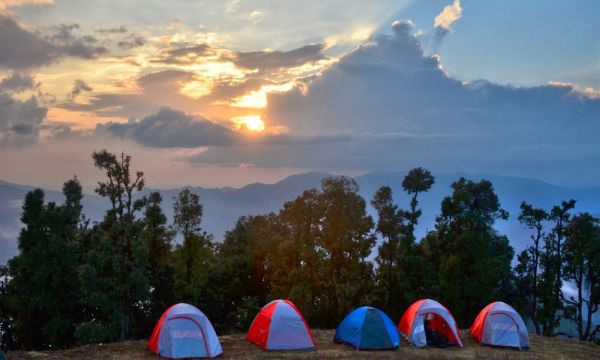
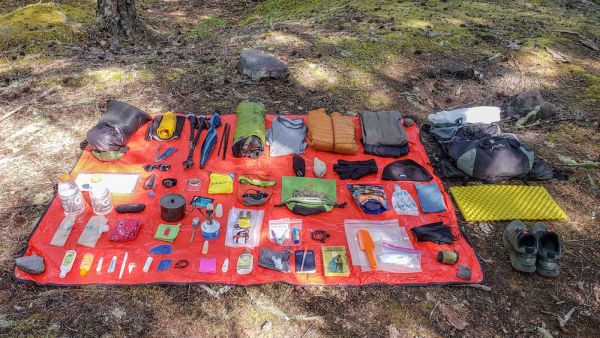
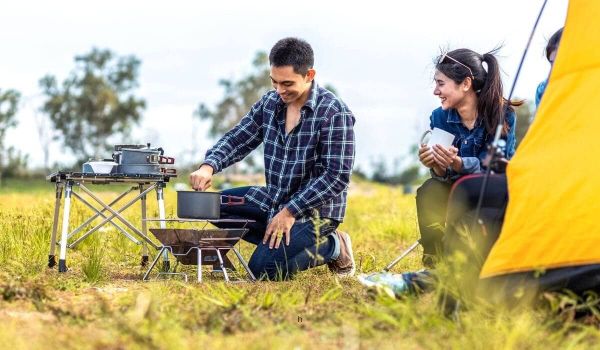
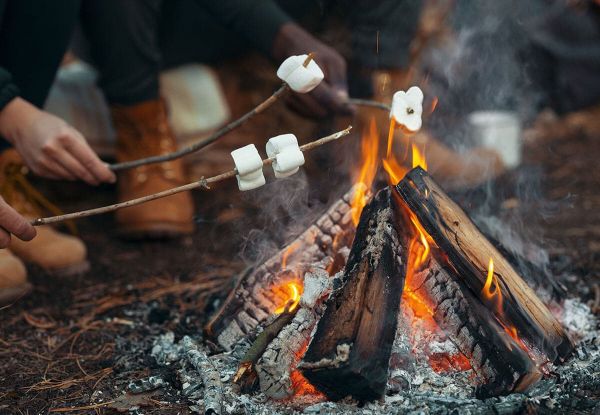
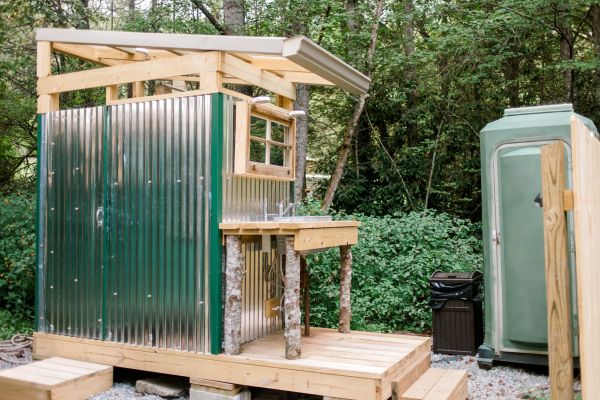
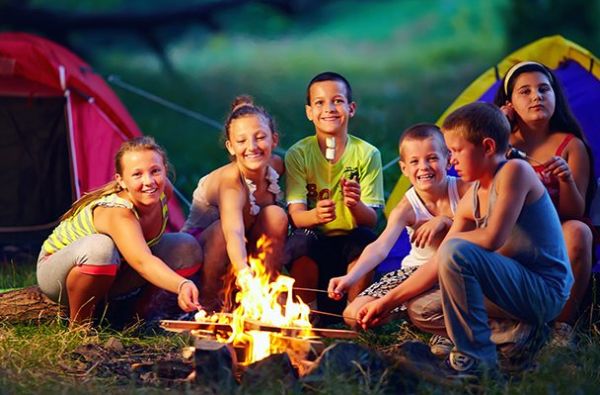
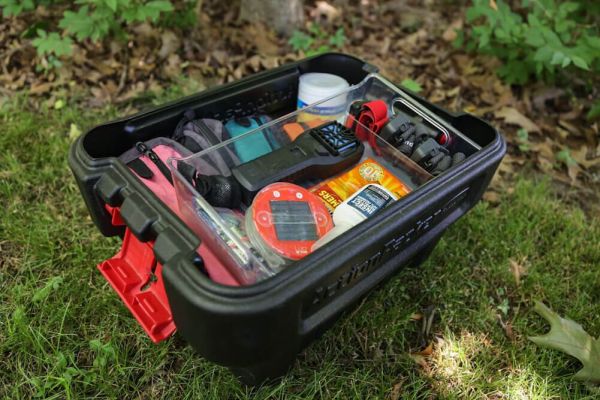
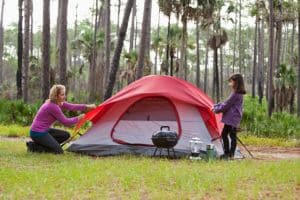
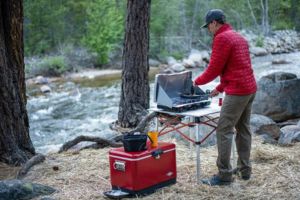
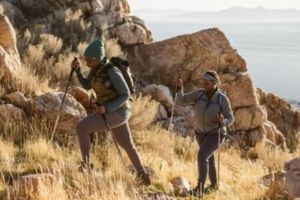
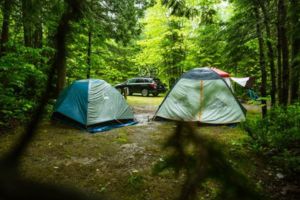
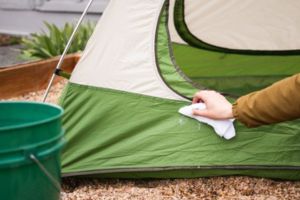
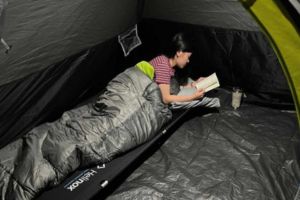
Leave A Comment